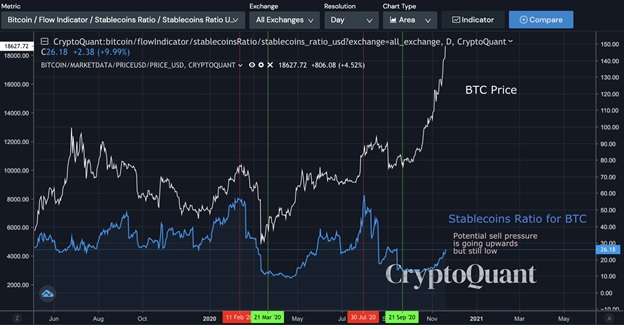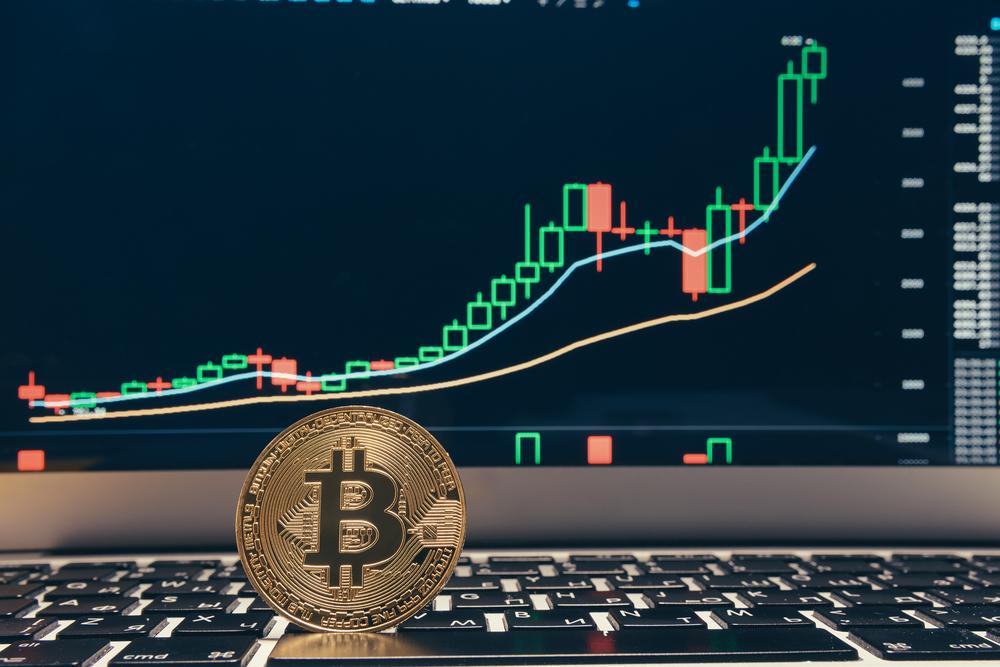- BTC is looking to hit its all-time high, but four key metrics show it will most probably face a pullback soon.
- These factors include the dangerously high fear and greed index and a fast-rising SOPR indicator.
Bitcoin’s bull run in recent months has seen the cryptocurrency shoot above $18,000. As Crypto News Flash reported, institutional interest has been key in the recent surge. For many, it’s just a matter of time before Bitcoin hits its all-time high of $20,000, and maybe even surpass it. However, according to these four metrics, the cryptocurrency may be heading for a pullback soon.
The $19,000 resistance level
Bitcoin’s rise to the current levels has seen the cryptocurrency break various long-standing resistance levels. One of the most significant, and difficult to break, was the $12,000 resistance level which Bitcoin struggled with for months. As analyst David Puell explained a few months ago, this was because it was the point at which buyers of the 2019 highs would reach breakeven.
The $19,000 resistance level is proving to be just as difficult for Bitcoin. Just two days ago, it seemed like Bitcoin was ready to break this resistance level, rallying to $18,895. However, it didn’t manage to break that mark. Bitcoin is trading now at $18,235.
https://twitter.com/ByzGeneral/status/1329977954395361288
As experts of the industry outline, there are significant sell orders across some major exchanges including Coinbase, Bitfinex and Binance that execute once Bitcoin nears $19,000. These orders, most of them by big whales, could trigger a big pullback for the cryptocurrency.
Crypto Fear and Greed Index at a dangerous high
The “Crypto Fear and Greed Index” is an analysis of these emotions into one simple number that gives us insight into what traders plan on doing next. This index stands at a dangerously high level currently, data from software aggregation platform Alternative shows. It now stands at 94, with 0 showing extreme fear by traders and 100 showing extreme greed.
This factor is the highest it has been in the past year. The factor always correlates with the price of Bitcoin, with most traders showing greed when the price is high and fear when the price dips. In mid-March when the BTC price dropped to $4,583, the index dipped as well to 11.
Highest Bitcoin SOPR indicator since July 2019
Yet another indicator of a price pullback soon is the high SOPR indicator the cryptocurrency shows. SOPR, which means the spent out profit ratio, is a gauge of how much profit Bitcoin owners have made at the moment. If its high, it means that most of the Bitcoin holders have broken even and are in the profits. This usually means they are willing to sell and indicates a price pull back.
The bad news is that the SOPR indicator is at its highest since July 2019. The chief technology officer at blockchain analytics firm Glassnode revealed on Twitter:
Adjusted SOPR (hourly, 7d MA) as high as it hasn't been since July 2019.
Correction incoming?#Bitcoin https://t.co/a5SfxSohH1 pic.twitter.com/xpnGCHxq5b
— Rafael Schultze-Kraft (@n3ocortex) November 20, 2020
At the time of writing, Bitcoin had recovered from a devastating few months and had doubled in price to $13,000. What followed was a correction that saw BTC lose close to 30% of its value in just two weeks.
Rising stablecoin ratio
Further proving that we may be headed for a price correction is the gradually rising stablecoin ratio. This is an indicator that is derived by dividing the BTC reserve by the stablecoins reserve on exchanges. As on-chain data platform Crypto Quant revealed recently, “Exchange’s BTC reserve can be seen as potential selling pressure and stable coins’ reserve as buying pressure.”

Crypto Quant’s CEO Ki Young Ju further pointed out that the selling pressure is going upwards. He believes we’ll see some correction in the near future. However, in some positive news, Young Ju noted that the selling pressure isn’t as high and will most probably trigger a mild pullback.
Recommended for you:
- Buy Bitcoin Guide
- Bitcoin Wallet Tutorial
- Check 24-hour Bitcoin Price
- More Bitcoin News
- What is Bitcoin?
Subscribe to our daily newsletter!
No spam, no lies, only insights. You can unsubscribe at any time.




